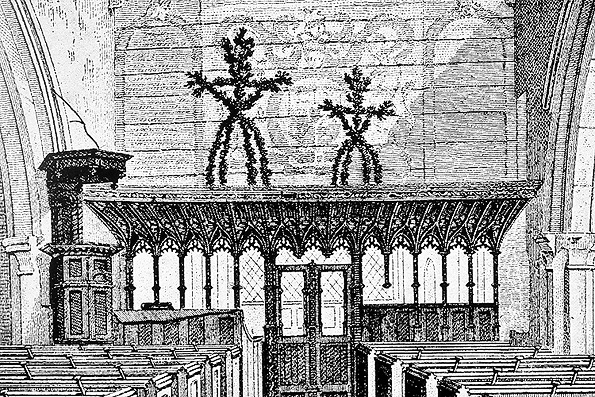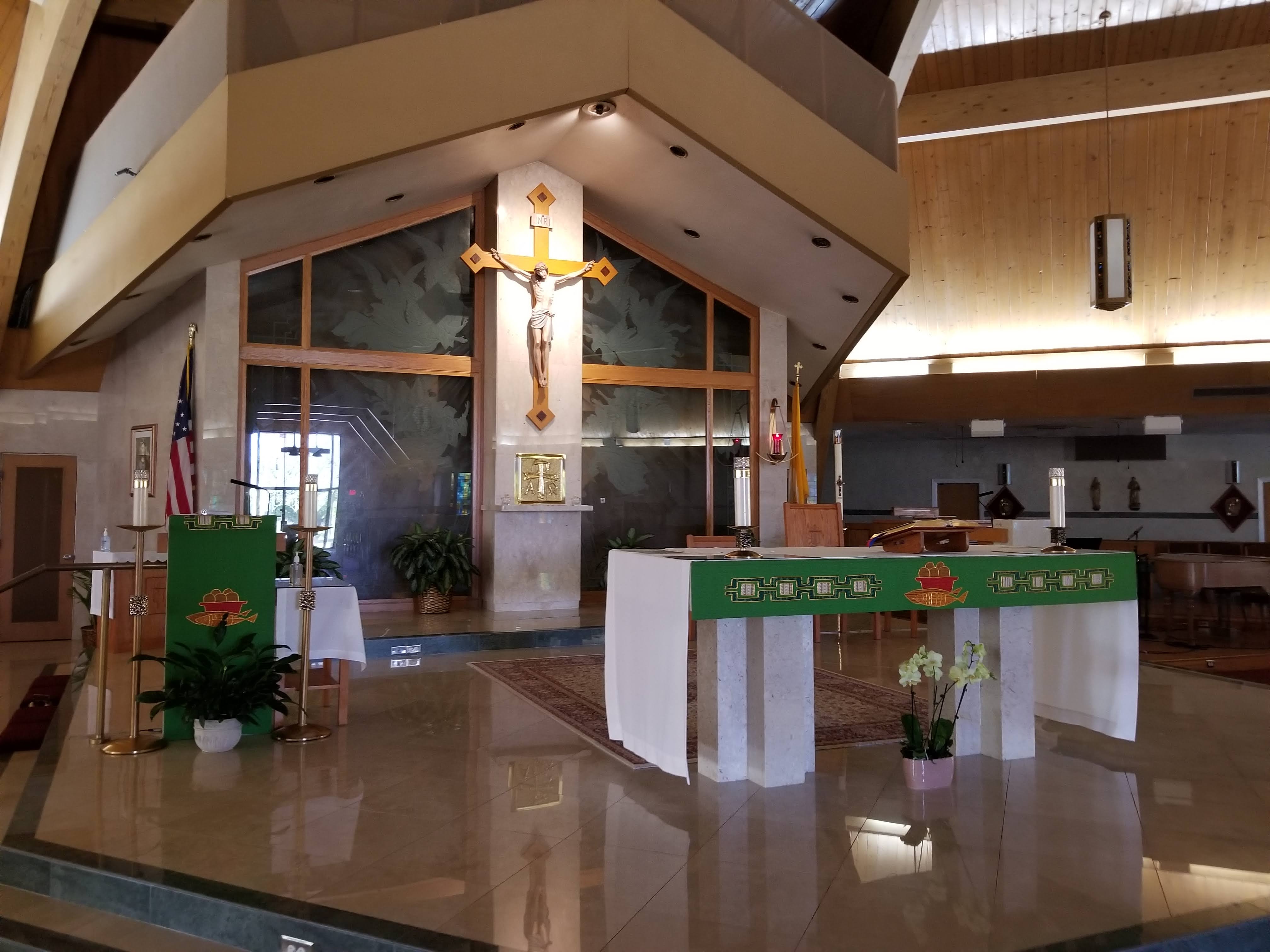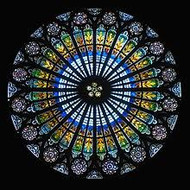Church Art
Posted by Jacob Luttio on Nov 20th 2020

While in prayer in front of a cross at the church of San Damiano in 1205, St. Francis of Assisi famously heard the words “Francis, go and repair my church which, as you see, is all in ruins!” [1]. Few can claim to have lived a life as literally close to the teachings of Christ as this son of a cloth merchant then went on and did [2]; he renounced his earthly possessions and formed the mendicant Franciscan order.
One cannot help wonder at all that St. Francis witnessed in front of the cross at San Damiano; if it were possible to tap into the eyes and ears, indeed the very nerves of St. Francis during that time, what would one experience?
While it may not be possible to observe St. Francis’ sensorium directly, we can certainly have a look at the San Damiano Cross. It depicts Christ, crucified with four nails, blood running down his arms and feet, a spear wound in his side. On his right are Mary Mother of Jesus and St. John the Beloved, on his left are Mary Magdalene, Mary Mother of James, and the centurion who proclaimed “Truly this is the Son of God”. These five are the “major witnesses” to Christ’s crucifixion. Three smaller figures, “minor witnesses”, are Longinus, who pierced Jesus’ side with a spear, Stephanos, who offered Jesus wine to drink on a sponge, and a small face of the unknown artist himself. By Jesus’ left and right hand are three angels each, by his feet are the patron saints of Umbria: St. John, St. Michael, St. Rufino, St. John the Baptist, St. Peter and St. Paul (four of whom have been blurred by damage over time). At the top of the cross is a scene depicting Christ’s resurrection and his welcome into heaven by ten angels [3].
The San Damiano cross is an example of a “rood cross” that was common at the time of St. Francis; the congregational area of a church was to be kept separate from the sanctuary and the San Damiano cross would hang at the demarcation between these areas: the rood. There is a small irony here in that St. Francis’ life was geared toward tearing down separations between those among high religious orders and the common people; the San Damiano cross which is closely associated with St. Francis hung over just one such tangible separation.

While the rood is no longer in widespread use, crosses and crucifixes that hang over the sanctuary certainly are. At my home parish there is a beautiful corpus of Jesus that hangs in midair above the tabernacle, hand carved in northern Italy. Christ’s wounds are not as visceral in this rendering, however His attitude draws one’s attention heavenward reminding us of the promise of resurrection.
800 years ago, during the time of St. Francis, the political landscape in which the church operated was quite different. Pope Innocent III vastly increased the reach of his office, suppressing the Cathars in southern France as well as organizing the fourth crusade to the Holy Land [4]. Given his penchant for excommunicating heretics, it was likely with some trepidation that St. Francis and his group of friars approached Pope Innocent III in order to be recognized as an order. This fateful meeting was dramatized in the 1972 Franco Zeffirelli film Brother Sun, Sister Moon [5], contrasting the soon-to-be mendicant order of St. Francis with the opulence of the early 13th century Rome.
Aside from his hand in the founding of the Franciscan order, Pope Innocent III had another important role in the history of church art: he was the first to systematize seasonal church colors. Although Christian communities had been regularly changing their paraments with the seasons as early as the fourth century [6], it was Pope Innocent III who formally declared white, red, black and green to be the colors of the church year. Purple was later added at the council of Trent [7].
Seasonal, liturgical colors are among the easiest things to notice when entering a church. The tradition was likely practiced among early Christians who used the tables at houses where they worshipped for Eucharistic celebration [8]. The Damask fabric covering the table would have to be changed over time and certain decorations would accompany certain times of the year [9]. Much later, Pope Innocent III codified which colors were to be used at what times.

Symbolism is important in daily life; it informs much of what we do, whether or not we realize it. It may be as simple as using a turn signal when changing lanes on the highway or giving a loved one a kiss on the cheek before leaving for work. What a wonderful way to communicate, without even using words.
In the context of Christianity, symbolism takes on an even deeper role. It represents not just daily communication but in fact ultimate destiny. As such, church art remains in lockstep with ultimate destiny when viewed through this lens.
Pope Francis, in his recent encyclical Fratelli Tutti, reminds us that ownership of material wealth is a temporary thing [10]. We cannot afford to seek riches while turning our backs on the suffering of others. In the aforementioned film it is implied with dramatic effect that the church was guilty of this. However, upon further inspection there is dimensionality to this conundrum.
The tragedy of the commons is well known to students of economics and history; in an environment where resources are shared among many agents, individual actors may be incentivized to take more than their share. Eventually, shared resources collapse.
This is not always the case, however. Churches, and cathedrals (especially during the middle ages) provided a space where parishioners could gather for a time set aside to worship while surrounded by works of art. Stained glass was used as a way to communicate scriptural stories without writing. In a way, this can be thought of as a shared resource: the natural beauty of a work of art, enjoyed by all. This likely played a very important role in the lives of medieval parishioners; though living very simply and humbly they had a place to go where it was possible to spend time apart, in Kairos.
The beautiful thing about considering church art a shared resource is that the whole is in no way diminished when divided among many. It is similar to the miracle of the loaves and fishes in this regard (Matthew 14:20-21). When a congregation sits in the light of a stained glass window, each person’s experience of that light is multiplied by the number who are gathered.
There is also the story of how Mary anoints the feet of Jesus with costly nard just prior to Jesus entering Jerusalem (John 12:3). Jesus affirms this seemingly extravagant act while drawing attention to his own burial. Herein lies a clue to Jesus’ attitude toward material wealth: on the one hand He states that it is easier for a camel to pass through the eye of a needle than for a rich man to enter heaven (Matthew 19:24). Nonetheless, when remembered in the context of ultimate destiny (His own sacrifice), material goods are to be enjoyed in the here and now. Perhaps the difference is in possessing and enjoying: the former may lead to ruin whereas the latter is what is intended for all.
In Fratelli Tutti, Pope Francis writes “Individualism does not make us more free, more equal, more fraternal. The mere sum of individual interests is not capable of generating a better world for the whole human family” [11]. Here again, the caution is against self-service rather than seeking to improve the world.
In the epistle to the Hebrews, the author speaks of a “cloud of witnesses” as an encouragement to be rid of sin and to persevere (Hebrews 12:1). The Apostle Paul writes that “in one Spirit we were all baptized into one body, whether Jews or Greeks, slaves or free persons, and we were all given to drink of one Spirit” (1 Corinthians 12:13). The symbol of Christ’s body represents the entire church. The differences between an eye and a foot are metaphors for individual differences.
Back to St. Francis: when he heard the words “repair my church”, he received a call to improve the condition of the building he was in: being mendicant is not at odds with appreciating beauty and wealth. Simplicity and beauty often go hand in hand. Subramanyan Chandrasekhar famously said in his Nobel acceptance speech “the simple is the seal of the true, and beauty is the splendor of truth” [12]. The San Damiano cross is composed of saints and witnesses; all are touched by the crucified Christ. Similarly today, rather than abscond from the world the words of St. Francis encourage us to be in relationship with one another: “where there is charity and wisdom there is neither fear nor ignorance” [13]. In our attitudes toward each other, Christ encourages us to enjoy God’s bounty with a spirit of charity and family. Church art is an important piece of this puzzle as it provides a shared resource that may be enjoyed by all.
[1] San Damiao, Assisi (n.d.) Wikipedia . https://en.wikipedia.org/wiki/San_Damiano,_Assisi
[2] Brady, I.C. (2020) Saint Francis of Assisi | Biography, Facts, Feast Day, & Legacy. https://www.britannica.com/biography/Saint-Francis-of-Assisi
[3] The San Damiano Cross. (n.d.) https://www.marian.edu/docs/default-source/about-marian-documents/the-san-damiano-cross.pdf?sfvrsn=10
[4] Pope Innocent III (n.d.) Wikipedia . https://en.wikipedia.org/wiki/Pope_Innocent_III
[5] Zefirelli, F. (1972) Brother Sun, Sister Moon - IMDb . https://www.imdb.com/title/tt0069824/
[6] Blain, S. (n.d.) Liturgical Colors and the seasons of the church year - United Church of Christ . https://www.ucc.org/worship_liturgies_liturgical-colors
[7] Babarsky, J. (2014) Do You Know Your Liturgical Colors? - EpicPew . https://epicpew.com/know-liturgical-colors/
[8] Tikkanen, A. (n.d.) Altar | religion | Britannica . https://www.britannica.com/topic/altar
[9] The Meaning of Liturgical Colors of the Church Year (n.d.) Red Argentina . https://www.redargentina.com/the-meaning-of-liturgical-colors-of-the-church-year/
[10] Bonnette, K. (2020) God is in the ties that bind, says Pope Francis in ‘Fratelli Tutti’ - U.S. Catholic . https://uscatholic.org/articles/202010/god-is-in-the-ties-that-bind-says-pope-francis-in-fratelli-tutti
[11] Pope Francis (2020) Fratelli Tutti [Encyclical letter] http://www.vatican.va/content/francesco/en/encyclicals/documents/papa-francesco_20201003_enciclica-fratelli-tutti.html
[12] Manier, J. (2013) What makes Nobel speeches endure. https://www.uchicago.edu/features/what_makes_nobel_speeches_endure
[13] Benedict, R. (2020) These words of St. Francis are startlingly relevant today.https://catholicsay.com/these-words-of-wisdom-from-st-francis-are-startlingly-relevant-today/

